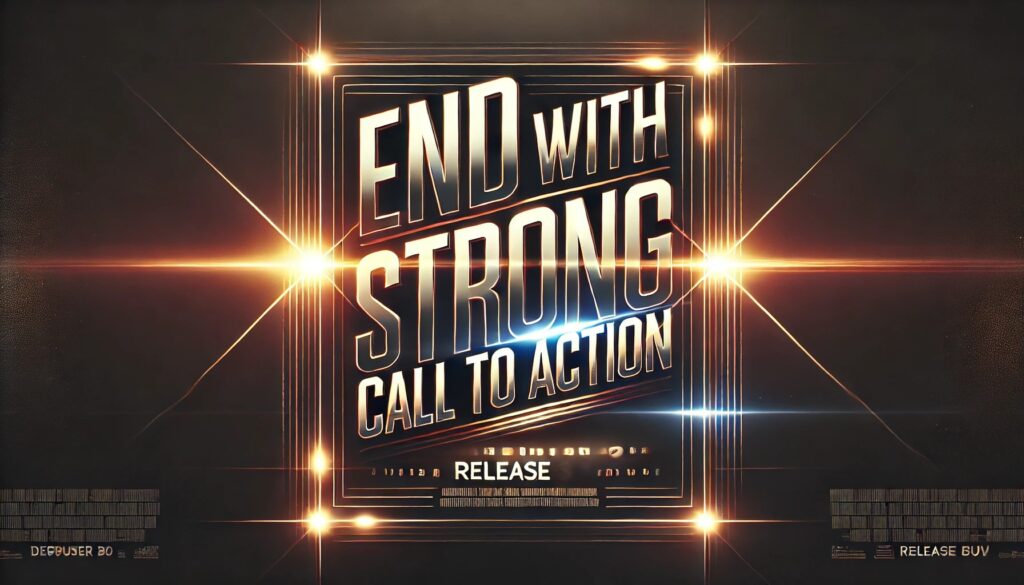Hooking Readers Without Spoiling the Story
A Great Product Review Is Like A Movie Trailer. When you watch a movie trailer, what makes you excited to see the film? Is it suspenseful music? The action-packed clips? The teasing of a story that seems too good to miss? A well-crafted product review works the same way. It should captivate, intrigue, and spark curiosity while providing just enough information to help the reader make a decision—without overwhelming them with unnecessary details.
A great product review works like a compelling movie trailer—it teases, excites, and informs without giving everything away. The key to writing an engaging review starts with a captivating introduction, drawing the reader in with an intriguing statement rather than a dull description. Instead of listing every feature, focus on the highlights that matter most to your audience, using real-life examples to illustrate benefits.
Keep the pacing tight—avoid overwhelming readers with excessive details or jargon. Address any weaknesses honestly but in a way that keeps the product’s appeal intact.
Finally, just like a trailer ends with a release date, your review should conclude with a strong call to action, guiding readers toward the next step. When structured effectively, a review becomes more than just a product breakdown—it becomes an exciting, persuasive piece that engages and converts readers, leaving them eager to learn more or make a purchase..
If you want more read below
1. Set the Stage with a Captivating Introduction

Every movie trailer starts with a hook—a visually stunning shot, an intriguing question, or a compelling line of dialogue. Your product review should do the same.
Instead of opening with a dry description of the product, set the tone with an engaging first sentence. Consider these examples:
🔹 Boring Introduction: “This is a smart vacuum cleaner that uses AI to map your home.”
🔹 Engaging Introduction: “Imagine never having to vacuum your floors again—your new cleaning assistant just learned the layout of your house and is already picking up dust before you even ask.”
The second introduction paints a picture, drawing the reader in by making them imagine a better version of their life with the product. It teases the benefits rather than just listing features—just like a movie trailer does when it shows a protagonist facing a problem that the movie will solve.
Pro Tip: Use an intriguing question or statement to set the scene.
- “Can a $50 wireless earbud rival Apple’s AirPods? I put them to the test.”
- “I was skeptical about this skincare product—until I saw my skin a week later.”
- “This gaming chair claims to be the most comfortable ever. Let’s find out.”
2. Highlight the Best Features Like a Director Chooses Scenes

A movie trailer doesn’t show the entire plot. Instead, it selects key moments that highlight the movie’s strongest points—whether that’s breathtaking action, hilarious jokes, or emotional drama.
Your product review should do the same. Instead of listing every feature, focus on the ones that matter most to your audience.
For example, if you’re reviewing a laptop, don’t just dump all the specs in a list. Instead, break them down into what they mean for the user:
- Performance: “This laptop flies through video editing with its powerful M2 chip.”
- Battery Life: “You can binge-watch Netflix for 10 hours straight without needing a charger.”
- Design: “At just 2.5 pounds, this laptop is so light you’ll forget it’s in your bag.”
Think about your audience. If they’re casual users, they care more about battery life and portability than CPU clock speeds. If they’re gamers, they want to know about frame rates and cooling systems.
Pro Tip: Show, don’t just tell.
Instead of saying, “The battery lasts a long time,” say:
“I worked a full 8-hour shift, watched two episodes of The Office, and still had 20% battery left by bedtime.”
3. Keep the Review Pacing Engaging—Avoid Long Exposition

Movie trailers move fast. They don’t drag on with unnecessary details. Your review should have the same engaging pacing—concise, informative, and entertaining.
One common mistake in product reviews is info-dumping—throwing too much technical jargon or unnecessary backstory at the reader. Instead of saying:
“This vacuum has a 2200mAh lithium-ion battery with a suction power of 1400Pa, and an upgraded V5 motor.”
Say this instead:
“This vacuum cleans up pet hair and dust effortlessly, and the battery lasts long enough to clean an entire apartment in one go.”
Readers want clarity, not complexity. Keep it snappy and digestible.
Pro Tip: Use formatting to break up information.
- ✅ Bold important details
- 📌 Use bullet points for quick takeaways
- 🖼️ Include images, GIFs, or videos to make the review visually appealing
4. Address Weaknesses Without Spoiling the Experience

A good movie trailer doesn’t pretend a film is perfect—it might tease a conflict or a challenge the hero must overcome. Similarly, your product review should mention any downsides without turning readers away completely.
For example:
❌ Bad approach: “The camera on this phone is terrible, and you shouldn’t buy it.”
✅ Better approach: “While the camera isn’t the strongest in low-light settings, it performs well in bright conditions and for everyday use.”
The second version acknowledges the weakness but puts it into context, showing that it may not be a deal-breaker.
If a product has a major flaw, suggest who shouldn’t buy it—but also highlight who would still find it useful.
5. End with a Strong Call to Action—Like a Trailer’s Release Date

Every movie trailer ends with a call to action:
🎬 “In theaters this summer.”
🎬 “Streaming exclusively on Netflix this Friday.”
Your review should also guide the reader toward the next step—whether that’s purchasing the product, reading more reviews, or signing up for updates.
Some effective call-to-action examples:
- “If you’re looking for an affordable yet powerful smartwatch, this is a great choice. Click here to check the latest price.”
- “Want a vacuum that actually saves you time? See it in action here.”
- “Still unsure? Read my comparison of this vs. its biggest competitor.”
Give readers a clear path forward. Many will be ready to click, but they just need that final nudge.
Final Takeaway: Keep the Mystery, But Deliver the Hype
A great product review is just like a great movie trailer—it excites, informs, and leaves the audience eager to take action.
✅ Set the scene with an engaging introduction.
✅ Showcase the highlights like a director selecting the best clips.
✅ Keep pacing tight and avoid overwhelming readers with too much detail.
✅ Address flaws tactfully, helping readers make an informed decision.
✅ End with a strong call to action, guiding them toward their next step.
When done right, your product reviews won’t just be another forgettable write-up—they’ll be exciting, persuasive, and most importantly, they’ll drive clicks. 🎬💻✨






